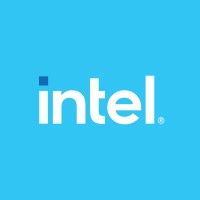
AMD Company Cyber Security Posture
amd.comWe care deeply about transforming lives with AMD technology to enrich our industry, our communities, and the world. Our mission is to build great products that accelerate next-generation computing experiences – the building blocks for the data center, artificial intelligence, PCs, gaming and embedded. Underpinning our mission is the AMD culture. We push the limits of innovation to solve the world’s most important challenges. We strive for execution excellence while being direct, humble, collaborative, and inclusive of diverse perspectives. AMD together we advance_
AMD Company Details
amd
36298 employees
1681268.0
334
Semiconductor Manufacturing
amd.com
Scan still pending
AMD_1246645
In-progress
Between 800 and 900
This score is AI-generated and less favored by cyber insurers, who prefer the TPRM score.
 AMD Global Score
AMD Global Score.png)

AMD Company Scoring based on AI Models
| Model Name | Date | Description | Current Score Difference | Score |
|---|---|---|---|---|
| AVERAGE-Industry | 03-12-2025 | This score represents the average cybersecurity rating of companies already scanned within the same industry. It provides a benchmark to compare an individual company's security posture against its industry peers. | N/A | Between 800 and 900 |
AMD Company Cyber Security News & History
| Entity | Type | Severity | Impact | Seen | Url ID | Details | View |
|---|---|---|---|---|---|---|---|
| AMD | Ransomware | 100 | 5 | 06/2022 | AMD138722 | Link | |
Rankiteo Explanation : Attack threatening the organization's existenceDescription: RansomHouse gang claimed to have stolen 450 GB of data from the semiconductor giant AMD in a recent cyber attack. The stolen data from the firm includes research and financial information, which they were analyzed to determine its value after adding it to their data leak site. The compromised data includes a leaked a CSV containing a list of over 70,000 devices that appear to belong to AMD's internal network, as well as an alleged list of AMD corporate credentials for users with weak passwords | |||||||
AMD Company Subsidiaries

We care deeply about transforming lives with AMD technology to enrich our industry, our communities, and the world. Our mission is to build great products that accelerate next-generation computing experiences – the building blocks for the data center, artificial intelligence, PCs, gaming and embedded. Underpinning our mission is the AMD culture. We push the limits of innovation to solve the world’s most important challenges. We strive for execution excellence while being direct, humble, collaborative, and inclusive of diverse perspectives. AMD together we advance_
Access Data Using Our API

Get company history
.png)
AMD Cyber Security News
AMD SEV-SNP Vulnerability Allows Malicious Microcode Injection with Admin Access
"Improper signature verification in AMD CPU ROM microcode patch loader may allow an attacker with local administrator privilege to load ...
Intel roasts AMD and Nvidia in its latest product security report, claiming AMD has vulnerabilities with no fix planned, Nvidia has only high-severity security bugs [Updated]
Intel says that AMD and Nvidia had more vulnerabilities versus its products.
Google Issues AMD Zen Security Alert
Now, security researchers working at Google have found a vulnerability in some AMD Zen-based CPUs that would allow a hacker to load malicious ...
In Other News: EntrySign AMD Flaw, Massive Attack Targets ISPs, ENISA Report
Noteworthy stories that might have slipped under the radar: Google discloses AMD CPU flaw named EntrySign, ISPs in the US and China targeted in ...
You think ransomware is bad now? Wait until it infects CPUs
"Coming from a background in firmware security, I was like, woah, I think I can write some CPU ransomware," Beek told The Register.
AMD Cyberattack: Semiconductor Giant Hit by Another 2024 Breach
AMD faces new cyberattacks, spelling trouble. In a troubling development for the tech industry, Advanced Micro Devices (AMD), a leading ...
BadRAM: $10 hack unlocks AMD encrypted memory
Cybersecurity researchers have identified a vulnerability (CVE-2024-21944, aka BadRAM) affecting ADM processors that can be triggered by rogue ...
AMD Microcode Vulnerability Allows Attackers to Load Malicious Patches
A critical vulnerability in AMD's Zen 1 through Zen 4 processors allows attackers to bypass microcode signature validation, potentially ...
AMD launches new Tainan office
US chip designer Advanced Micro Devices Inc (AMD) yesterday launched an office in Tainan's Gueiren District (歸仁), marking a significant ...

AMD Similar Companies
onsemi
onsemi (Nasdaq: ON) is driving disruptive innovations to help build a better future. With a focus on automotive and industrial end-markets, the company is accelerating change in megatrends such as vehicle electrification and safety, sustainable energy grids, industrial automation, and 5G and cloud i

Lam Research
Lam Research Corp. (NASDAQ:LRCX) At Lam Research, we create equipment that drives technological advancements in the semiconductor industry. Our innovative solutions enable chipmakers to power progress in nearly all aspects of modern life, and it takes each member of our team to make it possible. A

ASML
Who are we? ASML is an innovation leader in the global semiconductor industry. We make machines that chipmakers use to mass produce microchips. Founded in 1984 in the Netherlands with just a handful of employees, we’ve now grown to over 40,000 employees, 143 nationalities and more than 60 locations

Applied Materials
Applied Materials is the leader in materials engineering solutions used to produce virtually every new chip and advanced display in the world. Our expertise in modifying materials at atomic levels enables customers to transform possibilities into reality. These materials engineering solutions are th

Intel Corporation
Intel’s mission is to shape the future of technology to help create a better future for the entire world. By pushing forward in fields like AI, analytics and cloud-to-edge technology, Intel’s work is at the heart of countless innovations. From major breakthroughs like self-driving cars and rebuildin

STMicroelectronics
ST is a global semiconductor leader delivering intelligent and energy-efficient products and solutions that power the electronics at the heart of everyday life. ST’s products are found everywhere today, and together with our customers, we are enabling smarter driving and smarter factories, cities an

Frequently Asked Questions
Explore insights on cybersecurity incidents, risk posture, and Rankiteo's assessments.
AMD CyberSecurity History Information
How many cyber incidents has AMD faced?
Total Incidents: According to Rankiteo, AMD has faced 1 incident in the past.
What types of cybersecurity incidents have occurred at AMD?
Incident Types: The types of cybersecurity incidents that have occurred incident Ransomware.
Incident Details
Can you provide details on each incident?

Incident : Data Breach
Title: RansomHouse Gang Data Breach at AMD
Description: RansomHouse gang claimed to have stolen 450 GB of data from the semiconductor giant AMD in a recent cyber attack. The stolen data includes research and financial information, which they were analyzed to determine its value after adding it to their data leak site. The compromised data includes a leaked CSV containing a list of over 70,000 devices that appear to belong to AMD's internal network, as well as an alleged list of AMD corporate credentials for users with weak passwords.
Type: Data Breach
Threat Actor: RansomHouse gang
Motivation: Financial Gain, Data Theft
What are the most common types of attacks the company has faced?
Common Attack Types: The most common types of attacks the company has faced is Ransomware.
Impact of the Incidents
What was the impact of each incident?

Incident : Data Breach AMD138722
Data Compromised: Research Information, Financial Information, Internal Network Devices List, Corporate Credentials
What types of data are most commonly compromised in incidents?
Commonly Compromised Data Types: The types of data most commonly compromised in incidents are Research Information, Financial Information, Internal Network Devices List and Corporate Credentials.
Which entities were affected by each incident?
Data Breach Information
What type of data was compromised in each breach?

Incident : Data Breach AMD138722
Type of Data Compromised: Research Information, Financial Information, Internal Network Devices List, Corporate Credentials
Sensitivity of Data: High
Data Exfiltration: True
File Types Exposed: CSV
Ransomware Information
Was ransomware involved in any of the incidents?

Incident : Data Breach AMD138722
Data Exfiltration: True
Additional Questions
General Information
Who was the attacking group in the last incident?
Last Attacking Group: The attacking group in the last incident was an RansomHouse gang.
Impact of the Incidents
What was the most significant data compromised in an incident?
Most Significant Data Compromised: The most significant data compromised in an incident were Research Information, Financial Information, Internal Network Devices List and Corporate Credentials.
Data Breach Information
What was the most sensitive data compromised in a breach?
Most Sensitive Data Compromised: The most sensitive data compromised in a breach were Research Information, Financial Information, Internal Network Devices List and Corporate Credentials.
What Do We Measure?
















Every week, Rankiteo analyzes billions of signals to give organizations a sharper, faster view of emerging risks. With deeper, more actionable intelligence at their fingertips, security teams can outpace threat actors, respond instantly to Zero-Day attacks, and dramatically shrink their risk exposure window.
These are some of the factors we use to calculate the overall score:
Identify exposed access points, detect misconfigured SSL certificates, and uncover vulnerabilities across the network infrastructure.
Gain visibility into the software components used within an organization to detect vulnerabilities, manage risk, and ensure supply chain security.
Monitor and manage all IT assets and their configurations to ensure accurate, real-time visibility across the company's technology environment.
Leverage real-time insights on active threats, malware campaigns, and emerging vulnerabilities to proactively defend against evolving cyberattacks.




